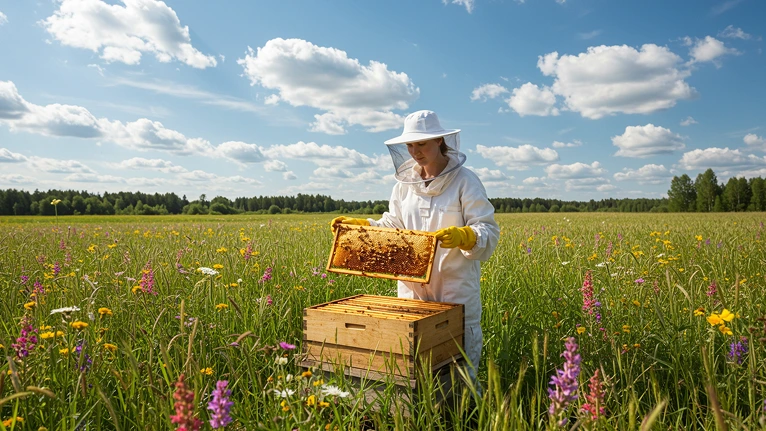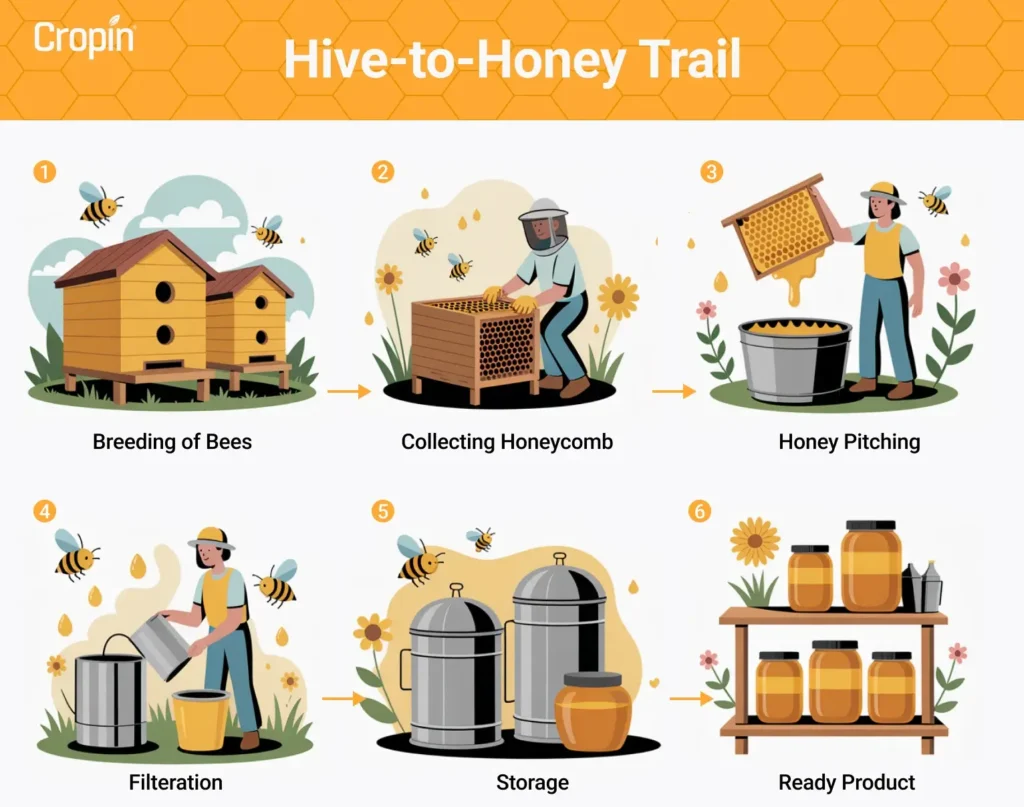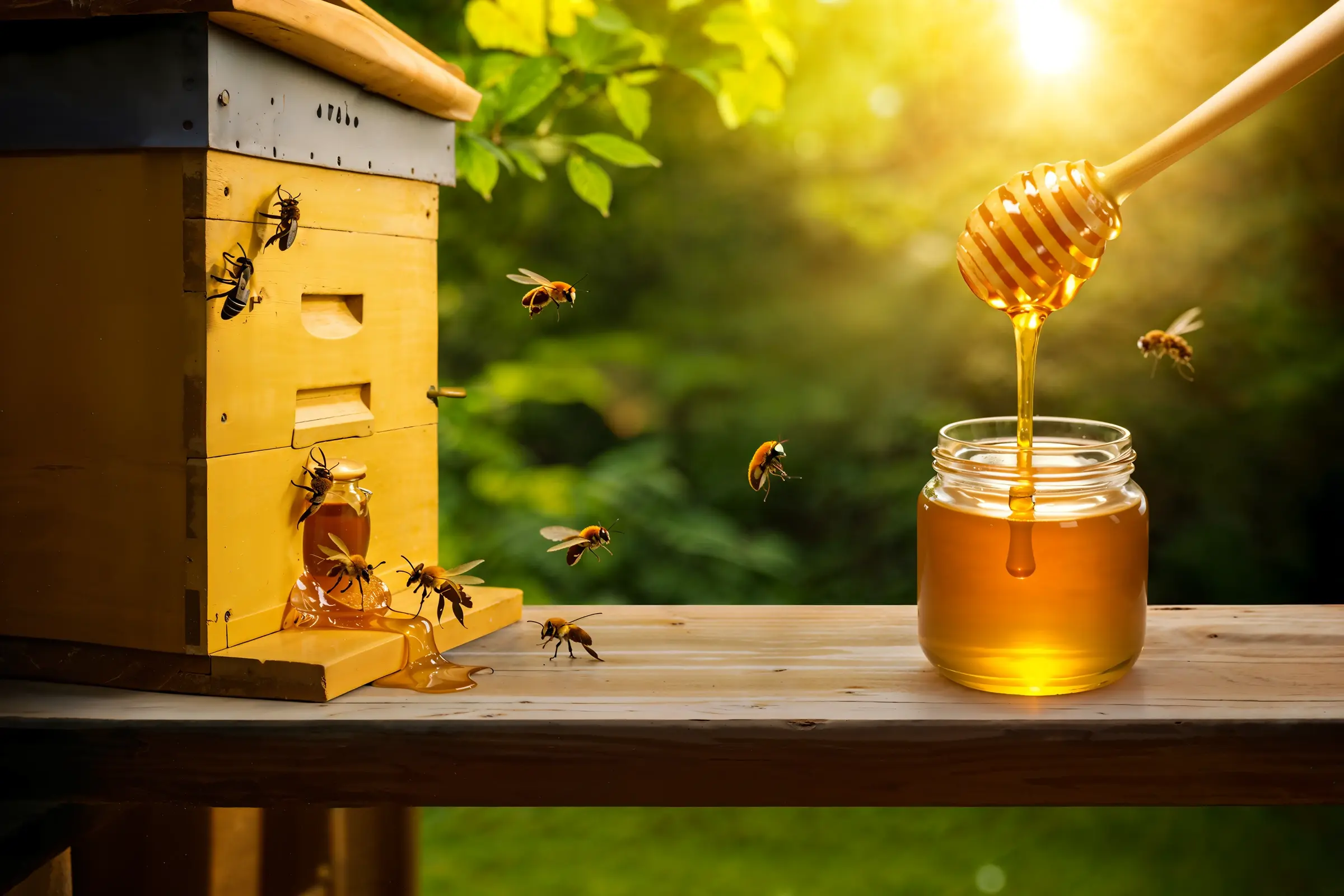Honey is undoubtedly one of the most preferred natural sweeteners considering it has higher fructose levels, making it sweeter than other alternatives, but with fewer calories. It also offers several health benefits and has been extensively used in traditional medicines for centuries. The estimated market size of the global honey market is a staggering US$9.2 billion in 2020.
However, recent instances of sugar additives being blended with honey at various levels of the value chain to sweeten the honey have led to distrust amongst honey connoisseurs. Despite these recent hiccups, the demand is picking up owing to a lack of better alternatives and its role as an immunity booster, particularly in light of the global pandemic.
Today people want to know and be sure of what they consume. They want to identify whether the honey has been collected and processed responsibly or not.
For this, the inclusion of traceability solutions is gaining popularity. Traceability solutions allow a producer to be transparent and offer insights to the consumers from the farm to their table, facilitating more informed choices.
Discussed below are some key factors explaining the rising trend of hive-to-honey traceability.
The stinging adulteration of honey
The demand for honey is to witness a steady rise; however, supply is limited. With conventional beekeeping techniques, both production and the number of bees get impacted. The number of bees is on a decline at an alarming rate, which can cause an immense impact on the environment.
Honey procurers and traders often blend the honey they obtain from various beekeepers, sometimes to bring down the cost by combining a large quantity of low-grade honey with a relatively small volume of high-quality, expensive honey.
Moreover, since honey is composed of fructose, glucose, and sucrose, adding corn or sugar syrup results in a homogeneous mixture, making it almost impossible to distinguish from the real deal.
Therefore, the adulteration of honey remains a significant problem plaguing the industry. A recent investigation in India revealed that honey marketed locally by several prominent brands failed the Nuclear Magnetic Resonance (NMR) imaging test specifically designed to identify honey adulteration and is a requisite for exports from India.
It is precisely why traceability is much needed today.
Demand for organic honey
In the world we live in today, consumers have become health conscious. The demand and consumption of organic honey are rising as it is produced from organically-grown plants free of chemicals, antibiotics, and other harmful components. Beekeepers need to adhere to several stipulations, such as ensuring that the beehive is 8 to 12 kilometers away from the nearest source of artificial chemicals, including roads, houses, and factories, and the flowers within a specified radius from the hive must be certified organic for the honey to be truly organic.
Undoubtedly, it is illegal in many countries to market honey as “organic” if it does not have the necessary certifications from government-approved regulatory bodies. Organic certification is also mandatory to export the product to other countries.

Quality compliance for export and certifications
Exporting a food product comes with several strict quality compliances. Most developed countries like Canada, the USA, the UK, and several European countries have adopted these quality compliances to ensure food safety. In this regard, traceability can play a crucial role. Considering that exports offer better profitability than domestic selling, several brands use traceability to meet these quality standards. Some of the criteria that honey producers need to meet for international trade include the following:
- The honey should not constitute any GMO-based content.
- The presence of hazardous substances like antibiotics, pesticide residue, and
- Residue levels of other chemical substances should be below the prescribed limits.
How does technology aid beekeepers and honey brands?
The honey value chain is currently a highly unorganized sector. Beekeepers constantly shift their location based on the bees’ movement, making it difficult to pinpoint the precise source of the honey product.
With advanced traceability offered by AgriTech leaders like Cropin, the transparency in the honey supply chain is improving gradually. It is resulting in better monitoring strategies for all stakeholders in the value chain.

Traceability to source
Backed by Cropin’s SmartWare and RootTrace, both the brand and consumers get a sense of reliability. Together, they offer comprehensive details of the product, thus redefining food safety assurance.
Quality compliance is a critical factor at the production level. Hence, with clarity of every process taken into the production cycle, brands can take several steps forward to improve output resulting in environmental safety and ethical production while ensuring the highest quality of the product.
Record of practices for certifications
Traceability offers a digital record of all activities from production to distribution. Traceability ensures transparency and provides an opportunity to take swift action to address faults in the system. Consequently, it further boosts the supply chain, thus making it more agile.
As a result, brands can contribute to SDG (Sustainable Development Goals); keeping a better track of the supply chain allows for reduced wastage, which further ensures improved profitability in the long run.
Access market opportunities
Traceability is an excellent tool to build consumers’ loyalty to a brand. When a consumer gets access to end-to-end knowledge of the consumables, it reinstills confidence in the product and the brand. Such efforts also help the brand to improve its marketing strategies as well. With traceability, brands can also ensure if a product is export-worthy or not.
If there are some concerns during the cultivation cycle, brands can take adequate measures to remedy them and, in the process, meet all the necessary quality standards. As a result, exports, having better revenues, also open a gateway to a global market.
Therefore, with traceability offered by revolutionary products like SmartWare and RootTrace , it becomes easier for brands and producers to clock a higher return on investment. Along with the support of government initiatives, such as the recently-launched online platform ‘Madhu Kranti portal’ by the National Bee Board (NBB) under the National Beekeeping and Honey Mission (NBHM, India), these measures can also improve incomes for beekeepers and cater to a rise in consumer awareness.
Partnering for a change
One of the leading FMCG companies in India recently chose Cropin as its traceability partner for its packaged honey. In a strategic move for the brand that will increase information transparency, the company is implementing a top-down approach and registering the vendors it procures its honey from. Although it is still impossible to trace the honey to its exact source, this partial traceability will allow the company to address quality concerns to a high degree. Cropin’s SmartWare and RootTrace will facilitate the brand to record relevant details concerning the batches of honey it obtains and monitor their utilization and processing up the value chain.
While there is scope to extend the traceability further to the root level and record the beekeepers and the apiaries for increased traceability, the present collaboration is a game-changer, offering the brand a competitive edge over other packaged honey products. The traceability information will increase the brand’s credibility and strengthen its consumers’ loyalty.








